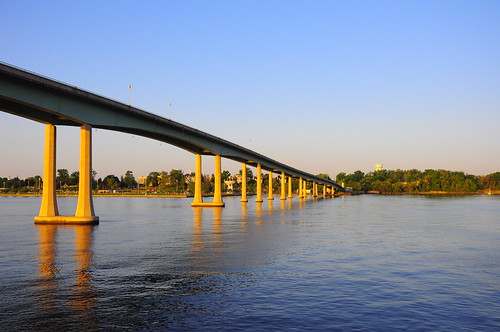Greg Muttitt: Whatever Happened to Iraqi Oil?
Posted by Big Gav in iraq, oil
TomDispatch has an update on Iraq's oil - Greg Muttitt, Whatever Happened to Iraqi Oil?.
In 2011, after nearly nine years of war and occupation, U.S. troops finally left Iraq. In their place, Big Oil is now present in force and the country’s oil output, crippled for decades, is growing again. Iraq recently reclaimed the number two position in the Organization of the Petroleum Exporting Countries (OPEC), overtaking oil-sanctioned Iran. Now, there’s talk of a new world petroleum glut. So is this finally mission accomplished?Well, not exactly. In fact, any oil company victory in Iraq is likely to prove as temporary as George W. Bush’s triumph in 2003. The main reason is yet another of those stories the mainstream media didn’t quite find room for: the role of Iraqi civil society. But before telling that story, let’s look at what’s happening to Iraqi oil today, and how we got from the “no blood for oil” global protests of 2003 to the present moment.
Here, as a start, is a little scorecard of what’s gone on in Iraq since Big Oil arrived two and a half years ago: corruption’s skyrocketed; two Western oil companies are being investigated for either giving or receiving bribes; the Iraqi government is paying oil companies a per-barrel fee according to wildly unrealistic production targets they’ve set, whether or not they deliver that number of barrels; contractors are heavily over-charging for drilling wells, which the companies don’t mind since the Iraqi government picks up the tab.
Meanwhile, to protect the oil giants from dissent and protest, trade union offices have been raided, computers seized and equipment smashed, leaders arrested and prosecuted. And that’s just in the oil-rich southern part of the country.
In Kurdistan in the north, the regional government awards contracts on land outside its jurisdiction, contracts which permit the government to transfer its stake in the oil projects -- up to 25% -- to private companies of its choice. Fuel is smuggled across the border to the tune of hundreds of tankers a day.
In Kurdistan, at least the approach is deliberate: the two ruling families of the region, the Barzanis and Talabanis, know that they can do whatever they like, since their Peshmerga militia control the territory. In contrast, the Iraqi federal government of Prime Minister Nouri al-Maliki has little control over anything. As a result, in the rest of the country the oil industry operates, gold-rush-style, in an almost complete absence of oversight or regulation.
Oil companies differ as to which of these two Iraqs they prefer to operate in. BP and Shell have opted to rush for black gold in the super-giant oilfields of southern Iraq. Exxon has hedged its bets by investing in both options. This summer, Chevron and the French oil company Total voted for the Kurdish approach, trading smaller oil fields for better terms and a bit more stability.
Keep in mind that the incapacity of the Iraqi government is hardly limited to the oil business: stagnation hangs over its every institution. Iraqis still have an average of just five hours of electricity a day, which in 130-degree heat causes tempers to boil over regularly. The country’s two great rivers, the Tigris and Euphrates, which watered the cradle of civilization 5,000 years ago, are drying up. This is largely due to the inability of the government to engage in effective regional diplomacy that would control upstream dam-building by Turkey.
After elections in 2010, the country’s leading politicians couldn’t even agree on how to form a government until the Iraqi Supreme Court forced them to. This record of haplessness, along with rampant corruption, significant repression, and a revival of sectarianism can all be traced back to American decisions in the occupation years. Tragically, these persistent ills have manifested themselves in a recent spate of car-bombings and other bloody attacks.
Washington’s Yen for Oil
In the period before and around the invasion, the Bush administration barely mentioned Iraqi oil, describing it reverently only as that country’s “patrimony.” As for the reasons for war, the administration insisted that it had barely noticed Iraq had one-tenth of the world’s oil reserves. But my new book reveals documents I received, marked SECRET/NOFORN, that laid out for the first time pre-war oil plans hatched in the Pentagon by arch-neoconservative Douglas Feith’s Energy Infrastructure Planning Group (EIPG).
In November 2002, four months before the invasion, that planning group came up with a novel idea: it proposed that any American occupation authority not repair war damage to the country’s oil infrastructure, as doing so “could discourage private sector involvement.” In other words, it suggested that the landscape should be cleared of Iraq’s homegrown oil industry to make room for Big Oil.
When the administration worried that this might disrupt oil markets, EIPG came up with a new strategy under which initial repairs would be carried out by KBR, a subsidiary of Halliburton. Long-term contracts with multinational companies, awarded by the U.S. occupation authority, would follow. International law notwithstanding, the EIPG documents noted cheerily that such an approach would put “long-term downward pressure on [the oil] price” and force “questions about Iraq’s future relations with OPEC.”
At the same time, the Pentagon planning group recommended that Washington state that its policy was “not to prejudice Iraq’s future decisions regarding its oil development policies.” Here, in writing, was the approach adopted in the years to come by the Bush administration and the occupation authorities: lie to the public while secretly planning to hand Iraq over to Big Oil.
There turned out, however, to be a small kink in the plan: the oil companies declined the American-awarded contracts, fearing that they would not stand up in international courts and so prove illegitimate. They wanted Iraq first to have an elected permanent government that would arrive at the same results. The question then became how to get the required results with the Iraqis nominally in charge. The answer: install a friendly government and destroy the Iraqi oil industry.
In July 2003, the U.S. occupation established the Iraqi Governing Council, a quasi-governmental body led by friendly Iraqi exiles who had been out of the country for the previous few decades. They would be housed in an area of Baghdad isolated from the Iraqi population by concrete blast walls and machine gun towers, and dubbed the Green Zone. There, the politicians would feast, oblivious to and unconcerned with the suffering of the rest of the population.
The first post-invasion Oil Minister was Ibrahim Bahr al-Uloum, a man who held the country’s homegrown oil expertise in open contempt. He quickly set about sacking the technicians and managers who had built the industry following nationalization in the 1970s and had kept it running through wars and sanctions. He replaced them with friends and fellow party members. One typical replacement was a former pizza chef.
The resulting damage to the oil industry exceeded anything caused by missiles and tanks. As a result the country found itself -- as Washington had hoped -- dependent on the expertise of foreign companies. Meanwhile, not only did the Coalition Provisional authority (CPA) that oversaw the occupation lose $6.6 billion of Iraqi money, it effectively suggested corruption wasn't something to worry about. A December 2003 CPA policy document recommended that Iraq follow the lead of Azerbaijan, where the government had attracted oil multinationals despite an atmosphere of staggering corruption (“less attractive governance”) simply by offering highly profitable deals.
Now, so many years later, the corruption is all-pervasive and the multinationals continue to operate without oversight, since the country’s ministry is run by the equivalent of pizza chefs.
The first permanent government was formed under Prime Minister Maliki in May 2006. In the preceding months, the American and British governments made sure the candidates for prime minister knew what their first priority had to be: to pass a law legalizing the return of the foreign multinationals -- tossed out of the country in the 1970s -- to run the oil sector.
The law was drafted within weeks, dutifully shown to U.S. officials within days, and to oil multinationals not long after. Members of the Iraqi parliament, however, had to wait seven months to see the text.
How Temporary the Victory of Big Oil?
The trouble was: getting it through that parliament proved far more difficult than Washington or its officials in Iraq had anticipated. In January 2007, an impatient President Bush announced a “surge” of 30,000 U.S. troops into the country, by then wracked by a bloody civil war. Compliant journalists accepted the story of a gamble by General David Petraeus to bring peace to warring Iraqis.
In fact, those troops spearheaded a strategy with rather less altruistic objectives: first, broker a new political deal among U.S. allies, who were the most sectarian and corrupt of Iraq’s politicians (hence, with the irony characteristic of American foreign policy, regularly described as “moderates”); second, pressure them to deliver on political objectives set in Washington and known as “benchmarks” -- of which passing the oil law was the only one ever really talked about: in President Bush’s biweekly video conferences with Maliki, in almost daily meetings of the U.S. ambassador in Baghdad, and in frequent visits by senior administration officials.
On this issue, the Democrats, by then increasingly against the Iraq War but still pro-Big Oil, lent a helping hand to a Republican administration. Having failed to end the war, the newly Democrat-controlled Congress passed an appropriations bill that would cut off reconstruction funds to Iraq if the oil law weren’t passed. Generals warned that without an oil law Prime Minister Maliki would lose their support, which he knew well would mean losing his job. And to ramp up the pressure further, the U.S. set a deadline of September 2007 to pass the law or face the consequences.
It was then that things started going really wrong for Bush and company. In December 2006, I was at a meeting where leaders of Iraq’s trade unions decided to fight the oil law. One of them summed up the general sentiment this way: “We do not need thieves to take us back to the middle ages.” So they began organizing. They printed pamphlets, held public meetings and conferences, staged protests, and watched support for their movement grow.
Most Iraqis feel strongly that the country’s oil reserves belong in the public sector, to be developed to benefit them, not foreign energy companies. And so word spread fast -- and with it, popular anger. Iraq’s oil professionals and various civil society groups denounced the law. Preachers railed against it in Friday sermons. Demonstrations were held in Baghdad and elsewhere, and as Washington ratcheted up the pressure, members of the Iraqi parliament started to see political opportunity in aligning themselves with this ever more popular cause. Even some U.S. allies in Parliament confided in diplomats at the American embassy that it would be political suicide to vote for the law.
By the September deadline, a majority of the parliament was against the law and -- a remarkable victory for the trade unions -- it was not passed. It’s still not passed today.
Given the political capital the Bush administration had invested in the passage of the oil law, its failure offered Iraqis a glimpse of the limits of U.S. power, and from that moment on, Washington’s influence began to wane.
Things changed again in 2009 when the Maliki government, eager for oil revenues, began awarding contracts to them even without an oil law in place. As a result, however, the victory of Big Oil is likely to be a temporary one: the present contracts are illegal, and so they will last only as long as there’s a government in Baghdad that supports them.
















